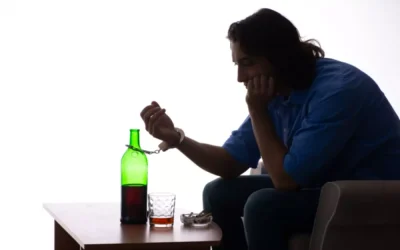Content
In the United States, the Commission on Accreditation of Allied Health Education Programs (CAAHEP) and the American Art Therapy Association set and maintain standards for art therapy education. Another organization, the Art Therapy Credentials Board (ATCB), monitors art therapists to ensure that they provide quality, ethical care. Art and music therapy may be covered by insurance, depending on the specific policy and the provider offering the How Art Therapy Can Help in Addiction Recovery therapy. It is important to check with your insurance provider to determine if art and music therapy is covered and if there are any restrictions or limitations on coverage. There are many different art therapy programs that therapists can use at any stage throughout the healing process — from children up through adulthood. If you or someone you love is struggling with issues surrounding alcohol or substance use issues, we’re here to help.
What are the positive effects of art therapy?
Art therapy has been shown to benefit people of all ages. Research indicates art therapy can improve communication and concentration and can help reduce feelings of isolation. This type of therapy has also been shown to lead to increases in self-esteem, confidence, and self-awareness.
Often called the mother of art therapy, she promoted the approach in the United States. She said that children were healthier and developed better when taught to express themselves creatively. A true fact-based on historical records tells us that during World War I and II, soldiers received art therapy treatments to recover from PTDS (Post Traumatic Stress Disorder). https://ecosoberhouse.com/article/stages-of-alcohol-intoxication-alcohol-toxicity-treatment/ These treatments combine talk therapy with artistic consciousness to promote introspection, reflection, and problem-solving skills among survivors. Silicon Valley Recovery’s professionally designed programs balance physical recovery and mental health with access to resources that help people confront their behaviors without being harshly judged or mistreated.
Recovery Journey
Art therapy activities can be used to explore one’s feelings and emotions, and to express themselves in a creative and unique way. Art therapy can also be used to help individuals to explore their interests and passions, as well as to develop new skills and abilities. Through art therapy, individuals can find an outlet to express themselves and explore their creativity. During an art or music therapy session, you can expect to engage in creative expression through various techniques, such as painting, drawing, sculpting, or playing an instrument. The therapist will guide you through the process and may ask you to reflect on your artwork or music to explore possible emotions or insights.

As the session closes, there’s usually time to reflect on the creation process and explore what a certain piece said about the participant’s emotional state. Hanes himself discovered art therapy while studying art and art education in college. He met another student who majored in art therapy, and the subject instantly fascinated him. The study found participants with ADHD had better focus and made decisions with better clarity and participants with Asperger’s had positive behavior. People with chemical dependencies who practiced the 12 Steps found this therapy to be beneficial in reinforcing the first step and the third step of the 12 Steps. There was less denial found in their addiction, noting that making collages seemed to help them.
The Positive Impact of Art Therapy on Addiction Recovery
Furthermore, as someone works to bring emotions to the surface, they feel safe being expressive and feeling understood. Relapse prevention techniques are paramount for people aiming to end their relationship with alcohol or drugs and maintain lifelong sobriety. Art therapy is a holistic treatment approach that gives you the tools to cope with triggers such as anger and loneliness. In creating art, you can learn how to overcome emotional roadblocks and express yourself when communicating with others. Art therapy can be a valuable part of the healing process for people working to achieve sobriety from substance abuse or those dealing with life challenges such as mental illness. When used as a complementary approach alongside traditional counseling techniques, the process of creating art can boost your self-esteem while you release stress and tension.

Facing the possibility of life without drugs and alcohol can be scary, but it is the best way for you to move forward. Art therapy for drug and alcohol addiction recovery is an excellent tool to help individuals connect with their emotional challenges, explore their feelings, and reconcile emotional conflicts they have been suffering from. Many addicts suffer from emotional trauma, which is often the reason for their substance abuse. Addiction stifles creativity, which is perhaps why creativity is often an important part of recovering from the disease. Many people who are addicted to alcohol or drugs also suffer from alexithymia, meaning they are unable to identify and describe emotions they–or others–experience. Since they lack emotional awareness, they don’t understand how others feel or what they themselves are feeling.
What Is Experiential Therapy?
Then, we’ll dive into the positive impact of Art Therapy on addiction recovery backed by real-life case studies and research. Art therapy programs are a form of meditative and expressive therapy that has been around for decades. It continues to grow in popularity as it assists individuals in expressing their thoughts and feelings. Expression through art helps people explore, understand, & resolve issues they may not be able to address using words alone. Sometimes deeply rooted issues are accompanied by intense emotions too difficult to verbalize.
How effective is art therapy?
In fact, people of all ages — children, teenagers, and adults — can take advantage of this treatment method. Research finds that both the presence of art, and art therapy, can have a positive impact on improving a person's mental health.
The researchers found that 36.8% of such programs used art therapy, demonstrating that it is an important option in many current treatment programs. Art therapy with a licensed art therapist is not only reserved for those with artistic inclinations. Art therapy is proven to help people deal with anxiety, depression, and other mental health problems.